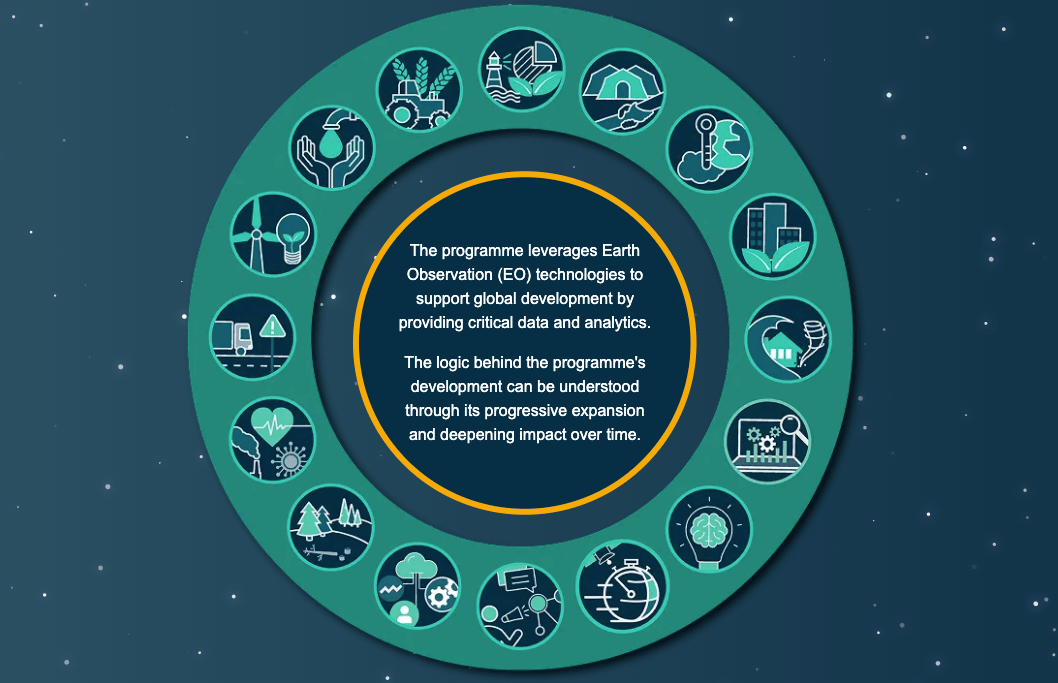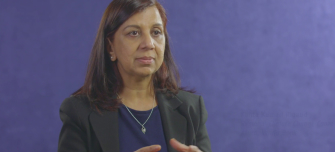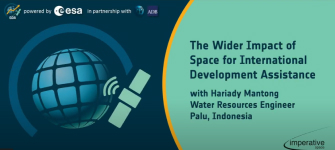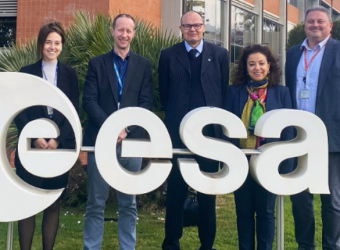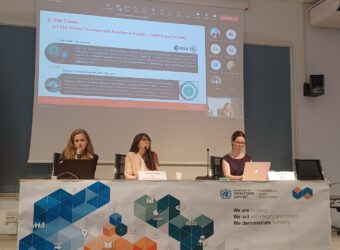
Rome, Italy, 10th March – At a time when climate adaptation is becoming ever more urgent, the European Space Agency’s Global Development Assistance (GDA) programme was prominently featured at the IDEAS 2025 Conference at the international headquarters of the Food and Agriculture Organization (FAO) of the United Nations in Rome, Italy. Invited by the Global Environment Facility (GEF), ESA’s representatives highlighted how Earth Observation (EO) technology can transform monitoring and evaluation practices for International Financial Institutions (IFIs), multilateral climate funds, and their Implementing Agencies/Entities, equipping them to better address climate challenges.
The conference, co-hosted by the International Development Evaluation Association (IDEAS) and the Independent Evaluation Office of the New Development Bank (IEO-NDB), attracted a diverse crowd of policymakers, development practitioners, multilateral organisations, civil society, and private sector representatives. Its theme, “Multi-dimensional Evaluation for Influence and Transformation,” focused on fostering interactive, inclusive, and action-oriented dialogue about how evaluation can significantly contribute to transformational global change.
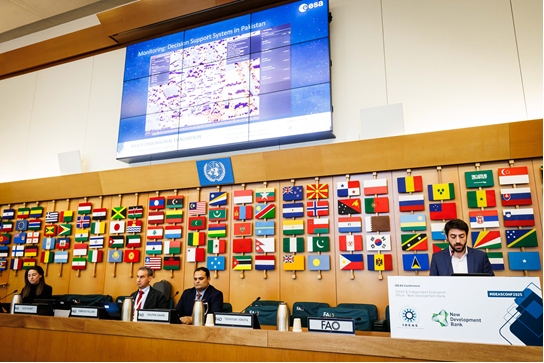
ESA’s participation was notably featured in the session “Utilizing Advanced Technologies for Evaluating Sustainable Development Goals,” where Alex Chunet and Anika Ruess from ESA’s Climate Information and Long-Term Action Division shared insights alongside representatives from GEF and the Asian Development Bank (ADB). Moderated by Fabrizio Felloni, Deputy Director of the Independent Evaluation Office (IEO) of GEF, the session emphasised the critical role of technology in improving sustainability assessments and evaluations.
In the session ESA representatives Anika Ruess and Alex Chunet showcased how satellites – with their unique and powerful vantage point – offer crucial data on immediate impacts of extreme weather events, as well as insights into longer-term threats to infrastructure and ecosystems. Unlike traditional evaluation methods, which often struggle to collect data in remote, inaccessible, or unstable regions, satellites offer comprehensive, near real-time information. This enables more effective preparedness, timely responses, and informed planning decisions.

In the GDA’s effort in making Monitoring and Evaluation (M&E) more precise, accessible, and affordable, ESA’s satellite-based solutions promise transformative impacts for global climate adaptation efforts. In an era of growing environmental uncertainty, ESA’s eyes in the sky may well prove indispensable for safeguarding vulnerable communities around the world.
This session exemplified the upcoming initiatives planned between GEF and ESA within ESA’s upcoming GDA Climate Adaptation and Finance Activity, scheduled to launch in April 2025. It specifically targets to strengthen the collaborations with leading global climate funds: the Green Climate Fund, Climate Investment Fund, Adaptation Fund, and the GEF. With this activity, ESA brings together a consortium of European EO experts to provide technical and strategic support to multilateral climate funds and their implementing agencies and intends to embed EO satellite technology directly into the climate adaptation strategies of key international financial players including its partners World Bank, ADB, IDB, and IFAD.
The GDA Climate Adaptation and Finance Activity builds on ESA’s proven Climate Resilience activity and aligns with the agency’s broader Climate-Space programme and forthcoming Space for Green Future (S4GF) Accelerator. Adopting an agile, responsive approach, ESA seeks to ensure that satellite-driven evaluation is integrated seamlessly into operational and strategic practices, increasing its influence and effectiveness within various sectors, such as food security, water resources management, forest and land use, and urban sustainability and resilience through cross-cutting support mechanisms (historical monitoring, scenario-based modelling and adaptation strategies identification).

By offering scalable, reliable, and actionable EO-driven solutions tailored to country-specific challenges, ESA’s GDA supports a dynamic response to climate change impacts. As the world grapples with increasing environmental uncertainty, ESA’s GDA demonstrates how EO technology can meaningfully transform global climate adaptation strategies, positioning IFIs and climate funds to better safeguard vulnerable communities worldwide.
Read more on EO for M&E purposes in ESA’s GDA report, link here.



